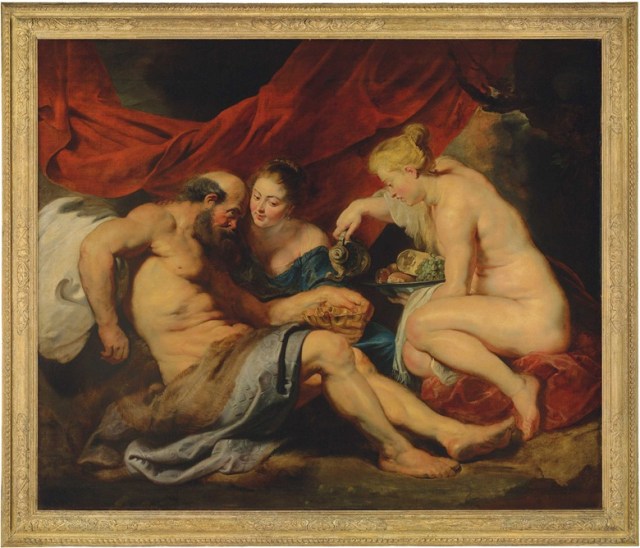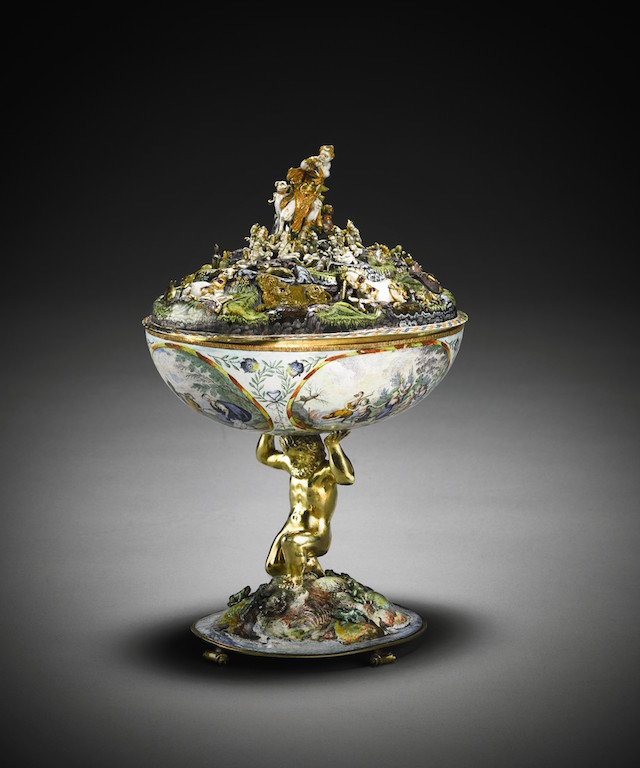To a casual observer, it might seem that great Old Masters turn up on the art market quite frequently. Only in January this year, for instance, did Sotheby’s New York offer us a masterpiece by Orazio Gentileschi – a delectable mythological nude of the chaste and captive Danaë who welcomes the advances of Jupiter, in the form of a shower of gold, as impregnation by a god will ensure her freedom. It was a tour de force which the J. Paul Getty Museum secured for a record $30.5m. This July, Christie’s London presents another baroque masterpiece of much the same date and with a comparable but biblical subject. This is Peter Paul Rubens’ epic Lot and his Daughters. It could hardly offer a greater contrast to the cool classicism and polished silken surface of the Gentileschi.
Lot and his Daughters (1613–14), Peter Paul Rubens. Christie’s London

For this bravura canvas of around 1613–14 finds Rubens at his most red-blooded and painterly, fuelled by the experiences of eight years in Italy. Its colour is high, its pigment luscious and its presence overwhelming. This may be an Old Testament story but its characters are revealed as all too human. As recorded in Genesis, Lot and his family are urged to flee the immoral city of Sodom by two angels. After Lot’s wife disobeys their instructions and looks back at the burning ruins and is turned into a pillar of salt, only Lot and his two chaste daughters find their way to a remote cave. In order to preserve the seed of their father, the girls encourage him to drink wine and then lie with them. One conceives Moab, father of the Moabites, the other Ben-Ammi, father of the Ammonites.
Rubens treats this morally complex subject with revealing subtlety. The slumped Lot is evidently drunk and beyond reason, his naked daughter somewhat abashed, yet both are allowed their dignity. Indeed Lot is given the monumental reclining form of Michelangelo’s Leda and with more than a passing nod to the famous Roman marble, Drunken Silenus. Unaware of what he has done, Lot’s crime is inebriation rather than incest. His daughter, too, is part modest classical Crouching Venus and part Penitent Magdalene. Only the sly expression of the clothed daughter could be seen as ambiguous, fuelling misogynistic moralising about the dangers of succumbing to the trickery of women.
Not that Rubens was averse to these stories. Just a few years earlier, around 1609–10, he had painted the spectacular and dramatic Samson and Delilah, acquired by the National Gallery in London in 1980 for £2.5m – at the time the second highest price paid for a painting at auction. Nor did he shy away from the sensationally horrific, executing The Massacre of the Innocents around 1611–12, which was acquired in 2002 by the late Lord Thomson of Fleet for £49.5m – then the third highest price for a painting at auction. Given the staggering rise in value of modern and contemporary art since then, there is no way that Lot and his Daughters could fetch even the fourth highest price for a painting at auction (Christie’s expect it to fetch ‘in excess of £20m’ on 7 July), but this is a picture in excellent condition painted by the greatest artist of the Northern baroque at the height of his considerable powers. How could this truly exceptional market rarity not make more than a Gentileschi?
Self-Portrait Sir Peter Lely. Sotheby’s London

On 6 July, Sotheby’s London offers one of the most spectacular drawings of 17th-century England. This is a grand self-portrait by the Dutch-born Peter Lely, Van Dyck’s successor as the leading portrait painter of the day. It is one of a small group of portrait drawings in black and coloured chalks heightened with white that the artist made as independent works of art. Alongside the portraits of his wife and son, also for sale, it has remained in his family’s possession for some 360 years (although on loan to the Fitzwilliam Museum in Cambridge since 1989). On the evidence of this bravura performance, it is tempting to proclaim him a considerably more accomplished draughtsman than painter. He was certainly one of the greatest collectors of other artists’ drawings that the world has ever seen.
It is fascinating to see how Lely presents himself. He cuts a dashing figure, hand raised to his breast, and handsome head held high. His costume dates this sheet to the second half of the 1650s when the artist was in his mid to late thirties and Cromwell was Lord Protector of the Commonwealth. For an artist who enjoyed the patronage of Cromwell, Lely’s flowing locks, fulsome sleeves and frilled cuffs seem markedly un-Puritan but then he also kept in touch with the court of the exiled Charles II in Holland. Offered as part of the Old Master & British Paintings evening sale, the drawing is estimated at £600,000–£800,000.
Another work with Dutch connections in this sale is a rare oil by the Swiss portraitist Jean-Étienne Liotard. A Dutch Girl at Breakfast was one of the highlights of his recent Royal Academy show, and the painting has remained in the collection of the Earls of Bessborough – the second Earl was Liotard’s most important patron – for almost 250 years (estimate £4m–£6m).
The same day, Sotheby’s London offers its Treasures sale, and a real Schatzkammer piece, an elaborately enamelled gold cup once thought to have been made by Benvenuto Cellini. On the domed cover, the goddess Diana presides over a lush Mount Parnassus, accompanied by her hounds and also by Orpheus, who sits playing his lyre and charming a host of tiny jewel-encrusted animals – everything from a unicorn to a miniature green monkey eating fruit. The cup itself is later, decorated with painted enamel scenes from Ovid’s Metamorphoses, while a gold Atlas kneels on a small promontory to support it, surrounded by lizards and snakes. First recorded in the collection of Baron Lionel de Rothschild, the cup now emerges from the store of the jewellers S.J. Phillips where it has languished for the last 88 years. These days, this remarkable 18cm-high confection, now called the Rothschild Orpheus Cup, seems likely to have been made in Augsburg around 1600 (estimate £600,000–£800,000).
The Rothschild Orpheus Cup (c. 1600), south German, Augsburg. Sotheby’s London

Christie’s 7 July The Exceptional Sale counters with a near life-size Meissen porcelain bird made for Augustus the Strong’s famous menagerie in the Japanese Palace in Dresden. Among the 28 varieties of birds created was the preening great bustard here, the model attributed to the great Johann Gottlieb Kirchner, and one of six delivered in the early 1730s. The only one known to remain in private hands, this 84cm-high technical tour de force may make up to £1m.
From the July/August issue of Apollo: preview and subscribe here.



